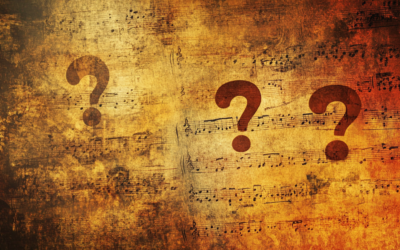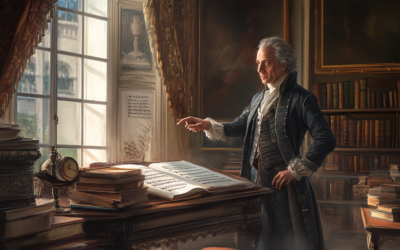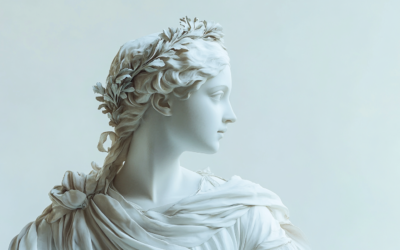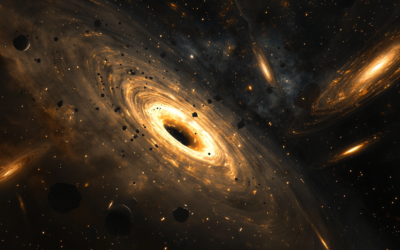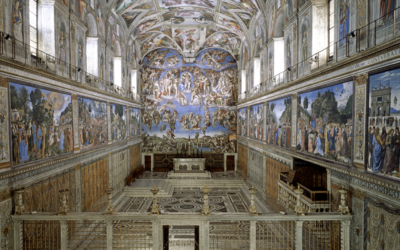Mozart Noir
The Hidden Influence of Joseph Boulogne, Chevalier de Saint-George
Joseph Boulogne, Chevalier de Saint-George, known as the “Black Mozart”, was a celebrated composer, violinist, and conductor in 18th-century Paris. Yet, his name is barely whispered in classical music circles, overshadowed by the very man whose career he helped define. Born in 1739 in Guadaloupe to a wealthy Frenchman and an enslaved African woman, Saint-George became a leading figure in Parisian music long before Mozart’s arrival, directing the famous Concert des Amateurs and influencing what we now call the Classical style. Saint-George’s influence on Mozart is undeniable, yet rarely acknowledged.
Mozart’s two Sinfonie Concertanti for violin and viola (K.364 and K.445) are often hailed as masterpieces of his “Viennese” style. However, there’s something curious about them: both works share the same orchestral arrangement as Saint-George’s own concertantes, and their innovative viola tuning—half a tone higher—echoes the daring style Saint-George employed years earlier. While historians date these works to 1779, they conveniently forget that Saint-George had already established this style in Paris a decade before.
Mozart: The Fall of the Gods
This book compiles the results of our studies on 18th-century music and Mozart, who has been revered for over two centuries as a deity. We dismantle the baseless cult of Mozart and strip away the clichés that falsely present him as a natural genius, revealing the contradictions in conventional biographies. In this work, divided into two parts, we identify and critically analyze several contradictory points in the vast Mozart bibliography. Each of the nearly 2,000 citations is meticulously sourced, allowing readers to verify the findings. This critical biography of Mozart emerges from these premises, addressing the numerous doubts raised by researchers.
"Saint-George's style was so advanced that even Beethoven would later adopt elements of his work, something Mozart—still clinging to his father’s baroque techniques—could never have dreamed of."
Mozart: The Fall of the Gods
Mozart’s legacy has been scrubbed clean of the influences that shaped his career, particularly the black composers like Saint-George who were rewriting the musical rules long before Mozart could. Saint-George, leading Europe’s finest orchestra, the Concert des Amateurs, introduced the very techniques that would later define Mozart’s so-called “genius”. But while Saint-George was a household name in Paris, performing at the Concert Spirituel and winning critical acclaim, Mozart was still struggling for recognition, hating both Paris and its music. By the time Mozart arrived in the French capital, Saint-George had already been dazzling audiences with his pioneering Symphonies concertantes and string quartets.
“Saint-George’s style was so advanced that even Beethoven would later adopt elements of his work, something Mozart—still clinging to his father’s baroque techniques—could never have dreamed of.”
The Paradox of Mozart’s Paris Experience
Mozart arrived in Paris in 1778, despising the French musical scene. In a letter to his father Leopold, he wrote, “Doesn’t the word Paris disgust you?”. And yet, while the young Austrian raged against Parisian culture, Saint-George was flourishing. He was leading Europe’s largest orchestra, performing in front of royalty, and defining the symphonic form that would soon be labelled “Classical”. Mozart, on the other hand, was living in the shadow of Saint-George’s success.
During this period, Mozart composed his famous Sinfonia Concertante K.364. The first five notes of its opening theme bear a striking resemblance to Saint-George’s Violin Concerto Op.7 No.2, composed just months earlier. Coincidence? Unlikely. Mozart and Saint-George lived under the same roof for over two months in the summer of 1778, dining together and, almost certainly, discussing music. The so-called “Mozartian” style was already well-established in Paris, long before Mozart tried his hand at it.
The Rise of the “Black Mozart”
While Saint-George’s compositions were more forward-looking, daring in their virtuosity and orchestration, Mozart’s music was often tied to the past, anchored in the Baroque techniques taught by his father. Saint-George used a modern bow, allowing for the virtuosic passages that would later be imitated by Paganini and even Beethoven. Mozart, by contrast, relied on Leopold’s outdated baroque bowing techniques. The gap between the two composers could not have been wider.
The Forgotten Innovator
Saint-George was not merely a skilled violinist; he was a visionary. By the time he was directing Concert des Amateurs, he had already revolutionised the symphonic genre. His symphonies and Concertantes bear more resemblance to Beethoven’s daring works than anything Mozart ever attempted. And yet, when Saint-George’s music is performed today, it is often underappreciated, if it is even recognised at all.
By the time Saint-George retired from composing, his legacy was already being buried under the overwhelming cult of Mozart. It is no accident that Saint-George was dubbed the “Black Mozart”. He was the genius behind the innovations that shaped the “Viennese” style, long before Mozart could claim it as his own.
You May Also Like
Mozart’s K 71: A Fragment Shrouded in Doubt and Uncertainty
Mozart’s K 71, an incomplete aria, is yet another example of musical ambiguity. The fragment’s authorship, dating, and even its very existence as a genuine Mozart work remain open to question. With no definitive evidence, how can this fragment be so confidently attributed to him?
Unpacking Mozart’s Early Education
The story of Ligniville illustrates the pitfalls of romanticizing Mozart’s early life and education, reminding us that the narrative of genius is often a construct that obscures the laborious aspects of musical development.
The False Sonnet of Corilla Olimpica
Leopold Mozart’s relentless pursuit of fame for his son Wolfgang led to questionable tactics, including fabricating a sonnet by the renowned poetess Corilla Olimpica. This desperate attempt to elevate Wolfgang’s reputation casts a shadow over the Mozart legacy.
Mozart’s K 73A: A Mystery Wrapped in Ambiguity
K.143 is a prime example of how Mozart scholarship has turned uncertainty into myth. With no definitive evidence of authorship, date, or purpose, this uninspired recitative and aria in G major likely originated elsewhere. Is it time to admit this is not Mozart’s work at all?
A Farce of Honour in Mozart’s Time
By the time Wolfgang Amadeus Mozart received the Speron d’Oro, the once esteemed honour had become a laughable trinket, awarded through networking and influence rather than merit. Far from reflecting his musical genius, the title, shared with figures like Casanova, symbolised ridicule rather than respect.
The Legend of Mozart’s Miserere
The enduring popularity of the narrative surrounding Mozart’s Miserere highlights the allure of the prodigy myth, but as we peel back the layers, we uncover a more nuanced picture of his life and the musical landscape of the time. The reality often contrasts sharply with the romanticized tales that have shaped our understanding of his genius.


